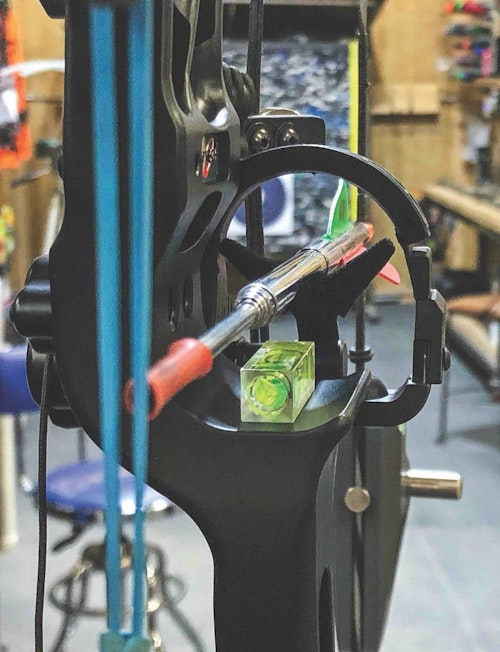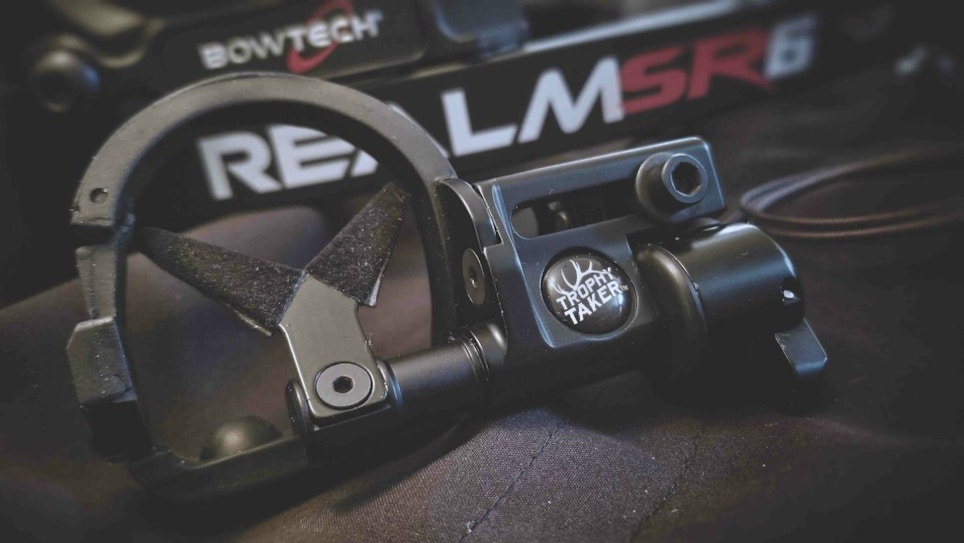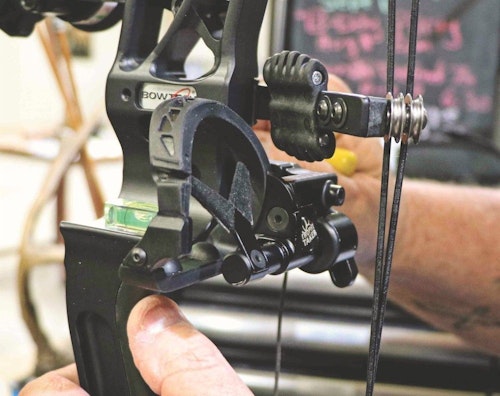Trophy Taker’s roots can be traced back, in founder Dan Evan’s words, to a living room chair and kitchen table in the winter of 1997. His product concept effectively revolutionized arrow rest technology and gave rise to the drop-/fall-away rests countless competitive archers and bowhunters employ today.
While Trophy Taker has delivered over the years with popular rests such as the Shakey Hunter and Pronghorn, and stepped up arrow containment with the Xtreme FC and Smackdown Pro, the company also jumped into broadheads with one of my personal favorites from the Tight Point days, Shuttle T-Lock, acquired circa 2008-2009, as well as Terminal T-Locks, A-TACs and other great heads.
Not satisfied with the one-two product punch of arrow rests and broadheads, Trophy Taker also offers Arrow Silencer, Vise, Falcon Five and Sawtooth quivers, as well as BuzzKiller and BuzzKiller Pro stabilizers and Shrink Fletch for easier arrow fletching. All things considered, however, Trophy Taker’s arrow rests are still foundational to company’s success, and the Smackdown LockUp seeks to turn this industry-niche competition up a notch.

First Impressions
Everything about the limb-driven Trophy Taker Smackdown LockUp Arrow Rest screams precision, durability and noise suppression. Foundational components, including the mounting bracket and horizontal adjustment bracket, are precision machined from lightweight aircraft-grade aluminum and coated in a durable matte-black finish. The shooting area comprises even tougher components with the launcher arm and arrow containment ring constructed of black matte stainless steel. Functional elements don’t slouch either, especially when it comes to noise suppression, adjustability and mechanics. The SD LockUp features rubber overmolding, rubber bumper stops and fleece-covered launcher forks. These elements work seamlessly together to maximize sound reduction, from outright suppression via coated components to the natural noise dampening. As a result, these details deliver throughout the resting, drawing and shooting cycle.
While Trophy Taker rest micro-adjustability pre-dates the SD LockUp, it certainly is present in this rest and includes an additional .25-inches of movement for thicker risers. The mechanics of the limb-driver cable, simple cable-to-limb attachment and integral roller bearings are sure to underscore the rest’s seriously simple, finite adjustability, smooth rise and ultra-quiet, lightning-quick drop.
The Setup
As luck would have it, a Bowtech Realm SR6 bow arrived on my doorstep at just about the same time as the Trophy Taker SD LockUp — a great surprise since I had hoped, from the moment the Realm SR6 was unveiled, to get my chance at stretching its string. Of course, marrying high-tech with high-tech can be tricky, and the gap between today and my years as a trained archery technician continues to widen. And let’s be honest, while I work hard to stay on top of the ever-changing, innovating world of archery, I’m not nearly as prepared as today’s technicians still hard at work setting up and servicing the latest high-tech offerings.
For that, I’ve learned to trust the integrity-driven genius, passion and outside-the-box tech approach of Randy Grard, owner of Fort Grard Guns and Archery in Weatherford, Texas. His down-and-dirty work ethic, decades of hands-on knowledge and hunger for advancing and expanding his high-tech knowledge commensurate with our industry’s rate of innovation, positions him squarely in my extremely limited circle of trust when it comes to my personal archery world.
It’s worth noting that before starting the rest installation, Randy double-checked the Realm SR6’s cam timing. It was a hair off and Randy had it timed perfectly in just a few minutes. Starting on the right foot is important to Randy since, second to the bow sight, the arrow rest is the first place people tend to make adjustments to compensate for poor bow setups.
Like any rest, initial positioning of the mounting bracket was simple and Trophy Taker’s three-point mounting system, with two contact points on the mounting bracket itself, ensured rock-solid placement. Randy employed several bubble-levels on the bow shelf, string and the mounting bracket before inserting the mounting bolt in the Berger hole and tightening. Still, he kept it loose enough to adjust until he was sure all points were perfectly level before finally tightening the mounting bolt down.
Once tightened, he turned his attention to the bottom limb to carefully install the limb-driven cable attachment point to the bottom-exterior side of the rest-side of the Realm SR6’s split limb. With the bow perfectly timed, Randy set about to ensure the launcher’s rise and drop were perfectly timed before tying off the rest and limb contact points and securing both ends with nocking points — perfect for quick, simple rest-cable adjustments if need be throughout the bow’s string life.

Stretch a String
After the rest was installed and timed perfectly, Randy adjusted the center-shot. He didn’t eye-ball and no, he didn’t use a laser either. True to his reputation and absent of archery tools altogether, he achieved precise center-shot in roughly 60 seconds — something to see — and proven when we paper tuned. Within just a couple shots, the Bowtech Realm SR6, Trophy Taker SD Lock Up arrow rest and Carbon Express Maxima Red 350 arrows delivered bullet hole performance with zero directional tearing. Not only does paper tuning expose horizontal adjustment issues, it exposes vertical problems as well since arrows can “tail” in any direction. Shooting bullet holes in paper is a clear indicator of solid arrow rest setup. Adjusting center shot for this setup was pretty straightforward; it was set at what I call dead-zero center and resulted in perfect flight, from paper to down-range grouping.
Like the Realm SR-6, the Trophy Taker SD LockUp was super quiet. Even at draw I heard virtually nothing through the launcher rise or backward arrow travel — not a click, not a slide . . . nothing.
At the shot, I heard nothing in the rest area. To qualify this statement, I had others shoot so I could listen and had others listen while I shot — the Marine Corps was gracious enough to leave me with tinnitus, so saying I don’t hear anything leaves quite a bit of room for debate. To have a half-dozen other folks state they don’t hear a peep, says a lot about the noise suppression/elimination of the rest and the bow setup overall. To say I was pleased was an understatement.
Timing also was impressive. Final launcher rise was accomplished at break-over and replaying of launcher drop in slow motion during shots demonstrated fall away as fast as I have ever experienced — honestly, perhaps faster. Of course, this is point shared often with limb-driven rest fans; however, as a long-time cable-driven rest shooters, I never paid much attention. It was timed and fell quickly, that was enough for me. In fact, as a cable-driven rest shooters, I thought even faster launcher drop may somehow negatively impact arrow flight. I was wrong. I do believe fall-away was faster and I still shot bullet holes.
Final Shots
I appreciated how easy it was to achieve precise center shot given the SD LockUp’s micro-adjustability. I also appreciate the additional range in the LockUp for setups on bows with more aggressive design features that can make center shot adjustments challenging. While the rubber overmolded arrow containment area made arrow-contact whisper quiet, I also appreciated the launcher bumper design. At the drop, they not only minimized launcher noise, but also appeared to eliminate any noticeable bounce back and even served as additional sound and vibration dampeners both in the containment area and in the launcher itself.
The LockUp’s ball-bearing mechanics also made for ultra-smooth and noiseless rise and fall. Honestly, the Trophy Taker Smackdown LockUp just might be the quietest arrow rest I’ve shot through to date. All told, the SD LockUp is one of the best arrow rests I’ve shot, and at MSRP price point of $129.99, it’s quite a no-brainer for archers, especially bowhunters, looking for a complete arrow containment/rest system that delivers the premium performance goods when it comes to noise, adjustability and hunt-of-a-lifetime reliability.
The only question to answer is whether shooters prefer cable-driven or limb-driven rests. I’m on the fence here; not because this rest performed beyond my expectations but because this was my first personal foray into shooting hundreds of arrows with a limb-driven system. Honestly, for the past dozen years or more, all I have employed on my personal bows are cable-driven rests. This is a different animal, and I’m looking forward to more time behind it. For archers who can embrace change or are already fans of limb-driven rests, Trophy Taker’s Smackdown LockUp is certainly a value-priced, premium performing home run.







